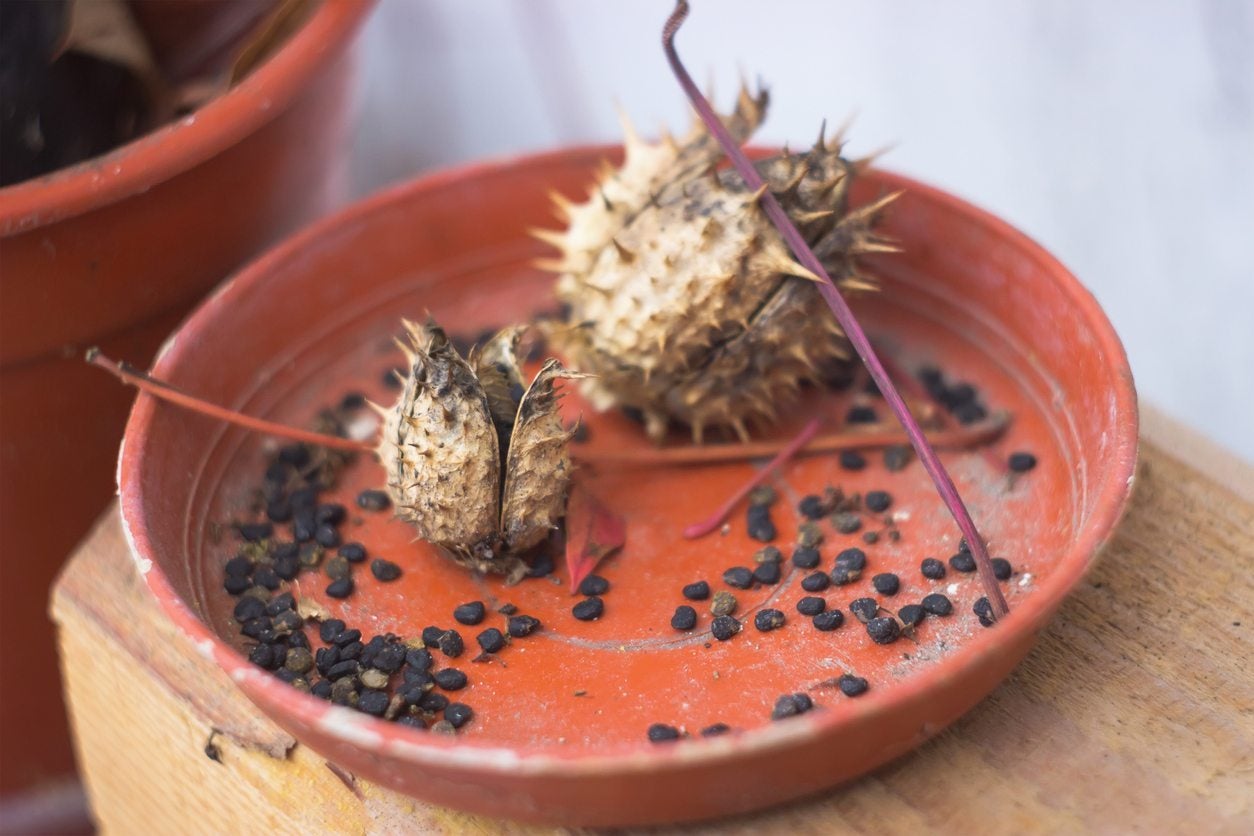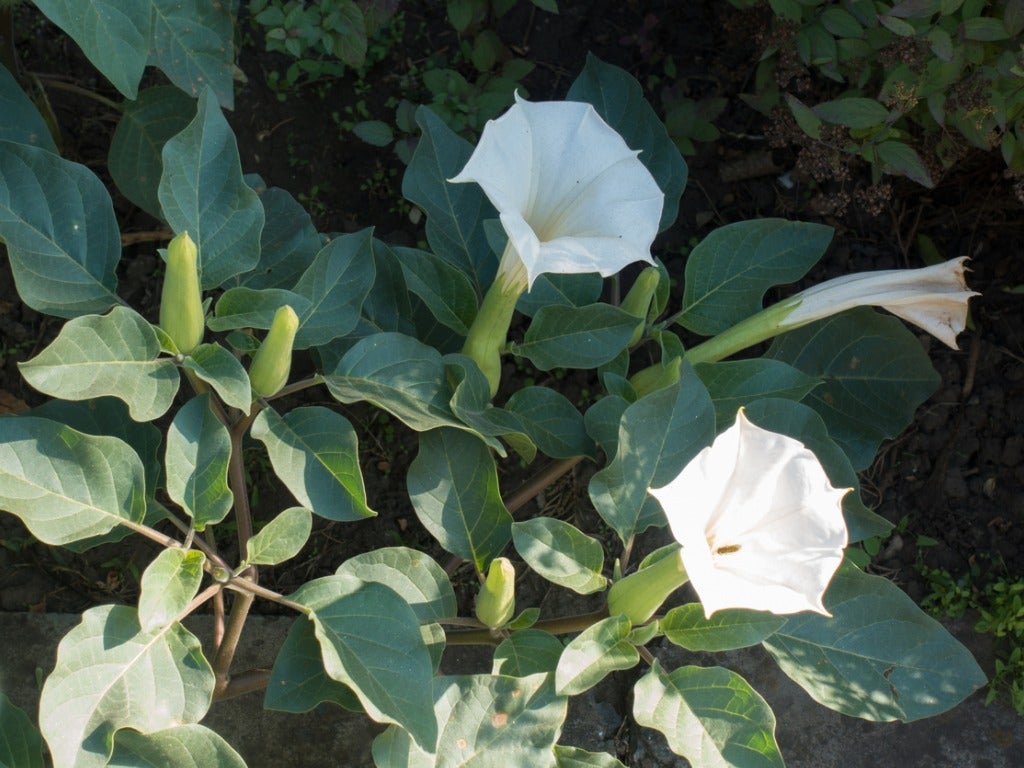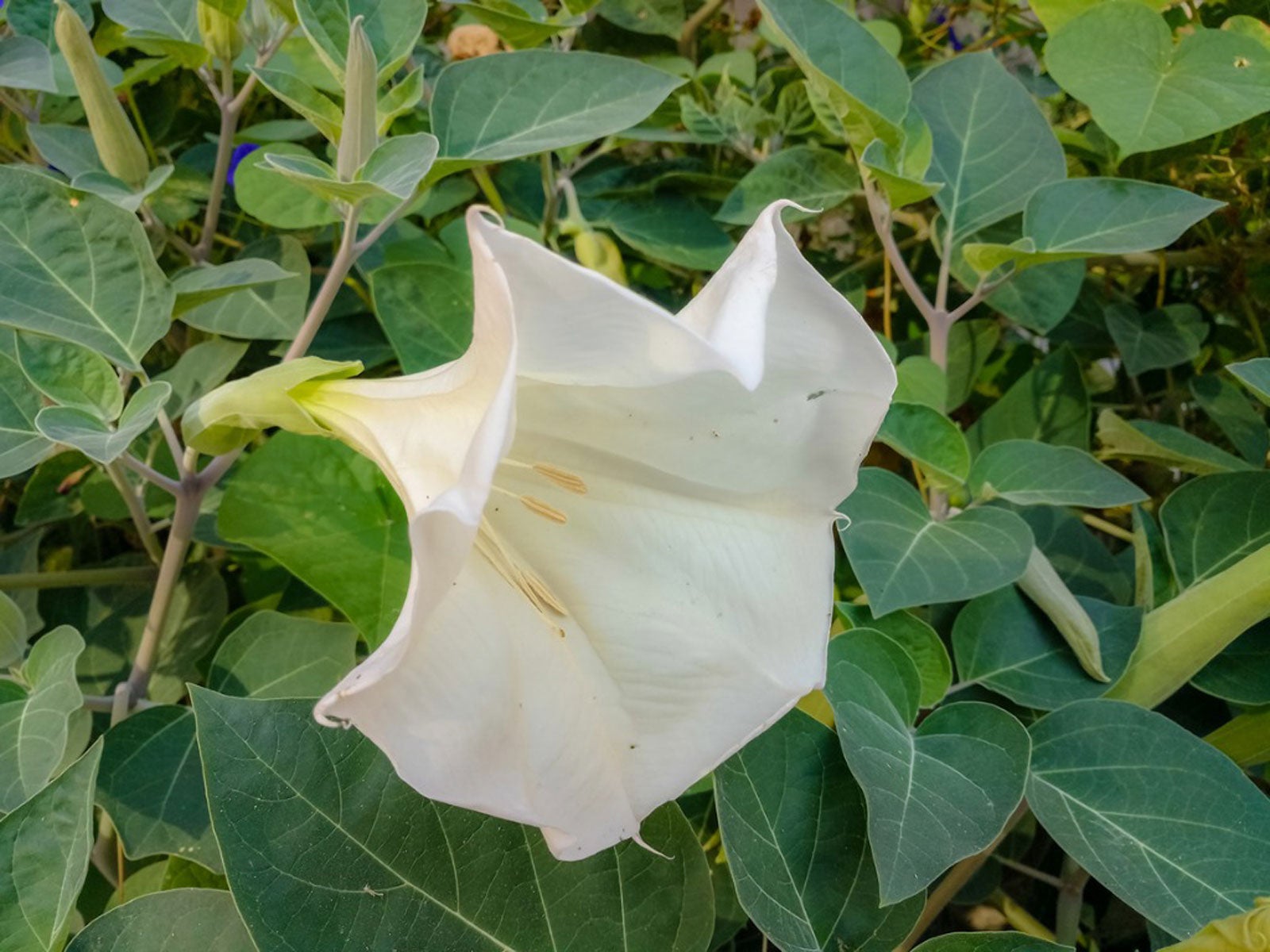How To Propagate Datura: Learn About Datura Plant Propagation


Oftentimes called angel’s trumpet because of its large, trumpet shaped blooms, or thorn apple because of its round, spiny seed pods, datura is a stunning plant that can give any garden a tropical feel. Most gardeners who try growing datura plants quickly realize they can use more in their gardens. In this article, we will discuss how to propagate datura plants. Read on for datura plant propagation tips and techniques.
About Datura Plant Propagation
Datura is a lovely flowering plant with large, trumpet shaped blooms that open upwards toward the sun. It is oftentimes confused with brugmansia, which is also commonly called angel’s trumpet. However, the trumpet shaped blooms of brugmansia hang down, while datura blooms face up. Hardy in zones 7 through 11, datura is grown and divided just like any perennial in these locations. It is important to note that datura contains toxins in all parts of the plant, which have been known to cause skin irritations, and ingestion can be fatal. Datura plants should not only be kept away from small children and pets, but extreme caution should be used when handling any parts of datura plants. Most datura plant propagation is done through division but both seeds and cuttings are also common methods.
How to Propagate Datura
Every two to four years, perennial grown datura plants may need to be dug up and divided in fall or spring. Be sure to wear gloves when handling the plants and cleaning tools. Irregular growth, yellowing foliage, and lack of blooms can be indicators that a datura plant needs to be divided. In cooler climates, where datura is grown as an annual, tip, stem, or root cuttings are usually taken in autumn before frost kills the plant. Cuttings of 3 to 4 inches (8-10 cm.) can be rooted in pots indoors, but generally require aid from grow lights to produce full, healthy plants. Rooting hormone, seedling heat mats, and watering with warm water can help speed up the rooting of datura cuttings. It is the spine-covered, round, seed pods that follow this plant’s blooms that provide us with the easiest method of propagating datura plants. When ripe, these thorny pods turn brown and split open, releasing the seeds. Seed pods can be harvested just before they split, or pantyhose can be placed around the seed pod to catch ripe seeds after the pod splits. It is important to wear gloves and use safety precautions even when handling the seeds of datura. Seeds are then dried out and stored in paper bags or envelopes in a cool, dry location until spring planting. Datura plants grow well in any rich, moist, but well-draining soil. They produce the most blooms in full sun and can be used in a variety of landscape types such as Zen, cottage, or pond gardens. When the danger of frost has passed, datura seeds or rooted cuttings can be planted directly in the garden or in containers.
Gardening tips, videos, info and more delivered right to your inbox!
Sign up for the Gardening Know How newsletter today and receive a free copy of our e-book "How to Grow Delicious Tomatoes".
-
 Get Ready For A Summer Of Hummers! Grow These Full Sun Hummingbird Plants and Flowers
Get Ready For A Summer Of Hummers! Grow These Full Sun Hummingbird Plants and FlowersIf you’re lucky enough to enjoy a sunny backyard, make sure you are maxing out on your pollinator opportunities and grow these full sun hummingbird plants and flowers
By Tonya Barnett
-
 12 Lush Alternatives To A Lawn For Sustainable Spaces
12 Lush Alternatives To A Lawn For Sustainable SpacesAlternatives to a lawn are beautiful and also beneficial to your local ecosystem and its pollinators. Explore our top picks for plants to replace grass.
By Tonya Barnett
-
 Moonflower Vs. Datura: Two Different Plants With Common Name Moonflower
Moonflower Vs. Datura: Two Different Plants With Common Name MoonflowerMoonflower vs. datura, this can be pretty confusing since both plants share many similarities and a common name. Learn differences here.
By Mary Ellen Ellis
-
 About Datura Plants - Learn How To Grow Datura Trumpet Flower
About Datura Plants - Learn How To Grow Datura Trumpet FlowerDatura, or trumpet flower, is one of those "ooh and ahh" plants. What is Datura? It is an herbaceous perennial or annual with a deadly reputation as an ingredient in poisons and love potions. Read here to learn more.
By Bonnie L. Grant